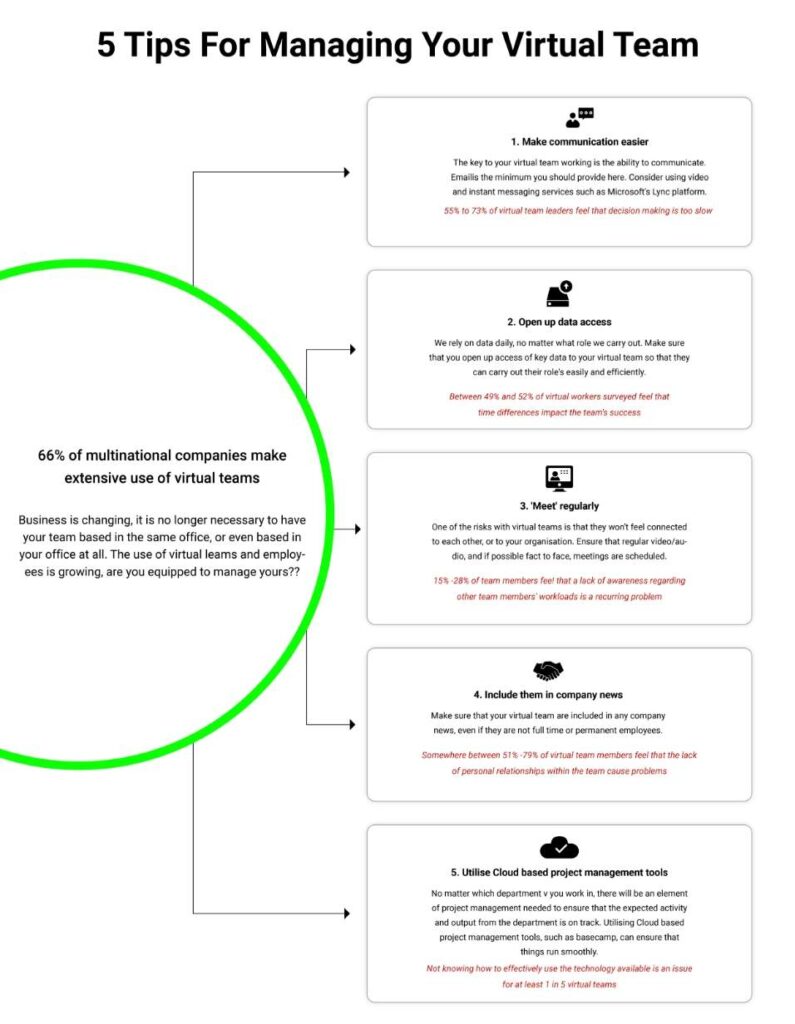Overcoming Virtual Team Challenges

The rise of remote work, accelerated by the global pandemic, has fundamentally reshaped the modern workplace. While offering unprecedented flexibility and access to a wider talent pool, virtual teams also face unique challenges that, if unaddressed, can hinder productivity and erode team cohesion.
This article explores the common hurdles encountered by virtual teams and examines strategies organizations are employing to foster collaboration, communication, and a sense of community in a distributed environment. Understanding these challenges and implementing effective solutions is crucial for businesses aiming to thrive in the evolving landscape of work.
The Landscape of Virtual Team Challenges
Virtual teams, by their very nature, lack the organic interactions that occur in a traditional office setting. This can lead to several interconnected problems.
Communication breakdowns are a frequent complaint. Misunderstandings can easily arise from relying solely on digital channels, particularly when team members come from diverse cultural backgrounds with varying communication styles.
According to a 2023 report by Gallup, only 30% of remote workers feel strongly connected to their company's culture, highlighting a significant challenge in maintaining engagement and fostering a sense of belonging.
Reduced visibility can also create difficulties in monitoring progress and providing timely feedback. Managers may struggle to gauge employee workloads and identify potential issues before they escalate.
Furthermore, the blurring of lines between work and personal life can lead to burnout and decreased well-being. Employees may find it difficult to disconnect, leading to longer hours and increased stress.
Addressing Communication Barriers
Organizations are adopting various strategies to mitigate communication challenges. Regular video conferencing is becoming a standard practice.
Using video allows for non-verbal cues and a greater sense of connection compared to audio-only calls, facilitating clearer understanding and more engaging conversations.
Asynchronous communication tools, such as project management platforms and shared documents, are also being leveraged to improve efficiency.
These tools enable team members to contribute and access information at their convenience, minimizing disruptions caused by time zone differences and individual work styles.
Fostering Connection and Engagement
Beyond communication, building a strong team culture in a virtual environment requires intentional effort. Social events, such as virtual coffee breaks and online team-building activities, are being implemented to encourage informal interactions and build camaraderie.
Some companies are even experimenting with virtual reality (VR) environments to create immersive collaboration spaces. These platforms allow team members to interact with each other in a more realistic and engaging way, fostering a stronger sense of presence and connection.
Recognition and appreciation are also vital for maintaining employee morale. Publicly acknowledging individual and team accomplishments helps to reinforce positive behaviors and create a sense of value.
Promoting Well-being and Productivity
Addressing the risk of burnout is another key priority. Organizations are encouraging employees to set boundaries between work and personal life.
This includes promoting the importance of taking regular breaks, disconnecting from work after hours, and utilizing available mental health resources.
Some companies are also offering flexible work arrangements and providing access to ergonomic equipment to support employee well-being.
Investing in training programs that teach employees how to manage their time effectively and prioritize tasks is also crucial for maintaining productivity and preventing overwhelm.
The Future of Virtual Teams
The challenges of managing virtual teams are complex and multifaceted. However, by proactively addressing these issues and implementing effective solutions, organizations can unlock the full potential of remote work.
Technological advancements will undoubtedly play a significant role in shaping the future of virtual collaboration, with emerging tools promising to enhance communication, foster engagement, and improve overall team performance.
Ultimately, success in the virtual environment requires a commitment to creating a supportive, inclusive, and engaging workplace where all team members feel valued, connected, and empowered to contribute their best work. By prioritizing these principles, organizations can build thriving virtual teams that drive innovation and achieve exceptional results.


















